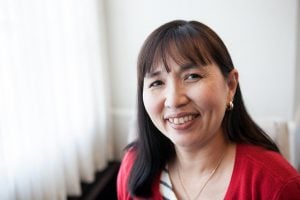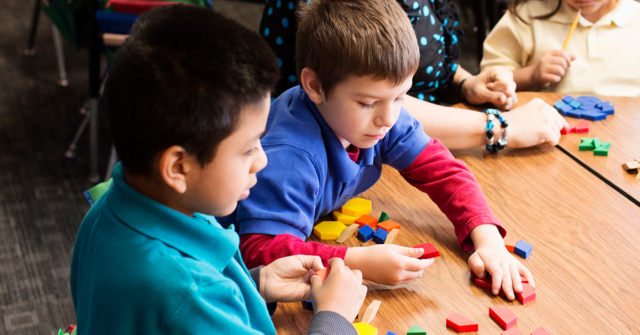
A year ago, I did not think I would be ready for year two of my research. Who am I kidding, at our Heinemann Fellows meeting in Denver last December, I felt my research faltering. But after an inspiring and rejuvenating three days with my co-fellows where Ellin Keene mentored us through a deep dive into our data, I had a realization: if I was going to move my students, I needed to focus more closely on my own biases and how I enacted those biases in our classroom.
My research question—In what ways does the exploration of personal identity through reading and discourse impact students’ perceptions of themselves as stigmatized readers?—made me look long and hard at my teaching practice. |
What was my role in my students perceiving themselves as stigmatized readers? What actions of mine resulted in students’ sense of powerlessness in our classroom?
In a blog about his upcoming book Embarrassment: And the Emotional Underlife of Learning, Tom Newkirk writes, “We internalize the voices—those that help and those that inhibit—from encounters with teachers, parents, coaches, friends, as well as detractors and critics.” Through my research, I am gaining a stronger understanding of this as part of the Cycle of Socialization1. The cycle explains how, starting from birth, we internalize what others communicate to us about our identity. Every word I say (or don’t say), every action I take (or don’t take) influences students’ identities as readers and learners.
These interactions express a choice of how to use my power and the personal biases that sometimes influence me. “No, don’t bring that graphic novel into our conference. I want you to read something with more words.” “No, we don’t have time to share that YouTube video,” as I worry about whether I can trust if a connection a student might be asking to share is on topic.
By saying no to my students, am I communicating that I have the power; they do not? Do my no’s unintentionally cultivate powerlessness and feed the stigma I ponder in my research question?
Teasing out the exact moment in my reflection when these questions started to take root is tricky. I would be lying if I said I had an aha in our first moments in Denver as we each shared a piece of writing or that it came to me when Ellin led us through a search for mentor texts by looking at the blogs of fellow educators like cohort 1’s fabulous Jessica Lifshitz. I am learning the best reflection ebbs and flows in a parallel with my journey as a learner side by side with the learning journeys of my students. I open myself up to similar vulnerability in my classroom that my co-fellows and I welcome each time we struggle with a vexing problem of practice, tweak our research questions, or revel in the success one of us shares with a child. Each time we say yes to this powerful journey of discovery.
So, now I’m thinking about what it means to say yes. Yes to whatever texts my students bring to share in our classroom. Inspired by Shonda Rhimes and my fellows research, my “Teaching Year of Yes” is leading me to learn from my students in ways I had not before. The irony is that my students’ attempts at this more authentic, truthful relationship were always present in our classroom, but I hadn’t paid attention to their statements in a way that allowed us to be productively vulnerable with each other. I realized it was time for me to say yes to their queries in a way that more equally shared the power and joy of learning with them.
“Yes!” to the sixth grader who asked to bring a graphic novel to our conference and then whispered, “I only read the pictures.” That confession gave me an opportunity to talk about how much more he could gain from reading the words, too, which we then did together.
“Yes!” to the eighth grader in my research group who asked to share a YouTube video. That gave the entire class a text connection to the social disparities we were studying in Sam Cooke’s “A Change Is Gonna Come.” (This was better than what I had planned.) His sharing started timidly, “Well, this is not really my video. They showed it in another class.” By not taking credit for the connection, he wanted us to know that the knowledge didn’t belong to him. But I could say yes to him again, responding, “By sharing, you have taken ownership of your learning in your other class, and you have deepened our learning by giving us a wonderful text-to-text connection.”
For the first time in my reading intervention career, I understand that statements like “I don’t like to read” and “I’ve never finished a book” should not be taken lightly or brushed aside. They are identity statements, markers of identity students are sharing. They’re saying, “Mrs. Osborn, this is where I am. Now, what are you going to teach me?” Just you wait, kiddo. The school year may be over, but hurry up, September, I’m ready for another year of yes.
 Anna Osborn felt the call to education after watching a news report on the need for teachers. More than 15 years later she still wakes up every morning with a passion for making a difference for her students. “Teaching is not for the fainthearted. There are unexpected tragedies and life changes that happen, yet, teachers hold an ethical and personal commitment to our students.” She is a Reading Specialist at Jefferson Middle School in Columbia, Missouri.
Anna Osborn felt the call to education after watching a news report on the need for teachers. More than 15 years later she still wakes up every morning with a passion for making a difference for her students. “Teaching is not for the fainthearted. There are unexpected tragedies and life changes that happen, yet, teachers hold an ethical and personal commitment to our students.” She is a Reading Specialist at Jefferson Middle School in Columbia, Missouri.
1 Harro, B. (2000). The Cycle of Socialization. In M. Adams, W. Blumenfeld, R. Castaneda, H. Hackman, M. Peters, X. Zuñiga (Eds.), Readings for diversity and socials justice, pp. 16-21. New York: Routledge.


